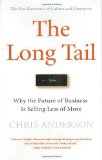Email and Event Marketing on Facebook Doesn’t Work
Outside of some close friends, one of the little known secrets about me is that I used to salsa dance. Not only did I enjoy dancing, I also competed in group and couples competitions. Like all enthusiasts, I subscribed to all the salsa lists to learn about upcoming events, lessons with outside instructors and more. Since I broke my ankle preparing for a competition (um, long story =), I’ve discontinued following the salsa activities and unsubscribed from all the lists. At least I thought I did.
Recently, I’ve started receiving notifications about these events, not through my email, but through Facebook. It’s getting so bad, that I’m on the verge of unfriending someone who has been sending me the most number of “event notifications.” In one case to be removed from a list, the response I received was: “however, please be advised this is a public event and it could be that one of your friends who originally received the invite from me extended the event invitation to you.”
Three Things to Consider Before Hitting Send on Facebook
While the full potential of Facebook is yet to be tapped by marketers and businesses, here are some key considerations before dropping your email lists into Facebook:
1. Relationships Matter: The intrinsic value of Facebook is that friends are great filters for knowing what I like and don’t like. Make sure you have an established relationship before sending an email or invite to someone, which leads to
2. Permission Marketing: Seth Godin’s book is key to engaging people via online marketing. Make sure you received permission from someone first. If you’re seeking to migrate your email list to Facebook, then be transparent about what you’re doing. Personally, the best thing is to ask those on your email lists if they would like to be contacted via Facebook – this way, they opt in for your Facebook communications.
3. CAN-SPAM Compliance: While I don’t know what the legalities are, I assume that Facebook communications would fall under the CAN Spam Act with regard to commercial content. As stated on the FTC website:
“Despite its name, the CAN-SPAM Act doesn’t apply just to bulk email. It covers all commercial messages, which the law defines as ‘any electronic mail message the primary purpose of which is the commercial advertisement or promotion of a commercial product or service,’ including email that promotes content on commercial websites. The law makes no exception for business-to-business email. That means all email – for example, a message to former customers announcing a new product line – must comply with the law.”
As such, make sure to allow for peopel to easily opt out of future communications.
Conclusions
To my knowledge, there is no way for me to opt out of someone’s “marketing” communications. Rather, I have to go to each group or event to leave. This is frustrating as many times, I have not directly signed up for the initial communications. Ideally, Facebook would create a backend platform tool for marketers to manage these types of communications. Similar to existing email solutions, the communications platform would enable businesses to:
1. Send communications to people who have opted in
2. Manage opt out requests for individual groups/events or everything managed by that business
3. Monitor response rates, unsubscribes and clickthroughs for the communications
4. Provide trending reports, such as friend referrals, time of day opens, etc.
5. And much much more
And for members, we should be able to filter out communications beyond just the spam button. For example, I do want to stay updated with my friend, I just don’t want all the updates regarding the next salsa class or bachata dance off. What recommendations would you provide for marketers and to Facebook?
Social Media Marketing Strategy 101: Definitions
 I had an interesting conversation with someone a few weeks ago about the definition of social media and social media marketing. I think it’s important to explore the definitions to ensure that we’re on the same page.
I had an interesting conversation with someone a few weeks ago about the definition of social media and social media marketing. I think it’s important to explore the definitions to ensure that we’re on the same page.
I posted this question to my different social networks and here are couple of responses that came back:
I would define social media and social marketing, as an attempt to connect with a niche portion of the population, which utilizes digital channels of communication. These individuals were formally unavailable and couldn’t have been harnessed through traditional marketing avenues. This day and age, it has become increasingly important to reach out to these individuals, especially in light of the expansion of social networking. Consequently, social platforms now grant businesses the ability to accomplish this with ease. By establishing more transparency and openness, companies can ultimately harness potential customers that were previously unattainable. – Ryan Schoenefeld via LinkedIn
akornblattSocial Media are the tools, Social Marketing is what you use Social Media for.
akornblatt Social media are the tools used in social network and social marketing, which are both unique as well
Social Media and Social Marketing Defined – Simply
While Wikipedia provides a fairly academic definition of social media, here’s my simple definition: Social media is when you and I use online applications, such as Twitter, LinkedIn, Facebook, etc. to create, share, and distribute content (e.g. Video, blog posts, etc.).
If Social Media is the tools, then Social Media Marketing is the toolbox. From my perspective, Social Media Marketing leverages social media to achieve key marketing objectives and engage in conversations with key constituents.
Conclusions
Based on these definition, my goal with these series of posts is to explore how organizations can leverage a social media marketing strategy to achieve marketing and communications goals. Like all marketing strategies, this requires different components to come together under this umbrella, such as public relations, lead generation, customer relations, analyst relations and more. Hence, I am changing this from “Social Marketing Strategy 101” to “Social Media Marketing Strategy 101.”
Do you agree or disagree? Let me know.
Other Posts in the Series
1. Social Media Strategy 101: Are You Ready?
2. Social Media Strategy 101: Which Persona Helps Tell Your Story?
Social Marketing Strategy 101: Are you ready?
 Previously, I highlighted how I used social media. After reading recent posts by Dave Fleet and Social Media Explorer regarding the social media marketing ecosystem and measurement respectively, I wanted to expand upon my thoughts about how to take social marketing to the next level.
Previously, I highlighted how I used social media. After reading recent posts by Dave Fleet and Social Media Explorer regarding the social media marketing ecosystem and measurement respectively, I wanted to expand upon my thoughts about how to take social marketing to the next level.
One challenge for many marketers isn’t how to get started, rather it’s how to delegate your time to make the most out of your social marketing. This series of posts will look at putting a social marketing strategy together. And where relevant, I’ll add my thoughts in terms of how PR can leverage this information for their strategies as well.
While many may start strong with social media, these efforts may slowly stop without fully evaluating if you’re ready to embark on a social marketing strategy. Here are six questions to ask yourself before starting:
1. Are your executives supporting you? While social marketing is being adopted by corporations, the question is whether your executives understand the value of social marketing to the business. Since results may not be immediate, you’ll want one executive sponsor who can advocate for the program and highlight the long-term benefits.
2. What are your objectives? The tendency is to start setting up pages and accounts before fully understanding what your objectives are. Take a step back and outline what your goals are before setting up accounts.
3. Where is your audience? Along with your objectives, evaluate where your audience congregates. Jeremiah Owyang of Web Strategist Blog calls this “fish where the fish are.”
4. Do you have something to say? Getting started is easy. Maintaining the momentum is difficult. Do you and your company have something to say, consistently? If not, then maybe starting a blog isn’t the best venue for you but maybe slideshare.net where you can post occasional presentations and white papers.
5. How much time do you have to dedicate to this? According to Exhibitor Media Group, 30% of marketing professionals spend 6+ hours on social marketing a week, with 10% spending 21+ hours. Do you have the time to monitor, create content and track metrics for your programs?
6. Who’s doing the work? Ok, you’ve identified someone who has the time, but who is that person? Social marketing is an extension of your corporate brand. You need to have the right individuals in place to evangelize and steward your brand.
Conclusion
By answering the above six questions, you can develop the right approach that fits your company and time. What other questions should one ask before pursuing a social marketing program?
Five Ways to Get Hung Up On
On I recently had this happen to me not once, not twice, but THREE times from the same company. Each time, I mentioned I was in the midst of a deadline and to please send me an email with more information. To date, I have not received any info and each time, the person tries to engage me in a long phone conversation.
This made me realize that we do in marketing and PR is a form of selling. Marketing – we’re trying to “sell” an audience to consider our product or service; PR – we’re trying to “sell” a reporter, blogger or analyst on our version of story.
Cold calling is probably the most difficult part of selling. Do it well, and the reporter readily works with you on a story. Do it poorly and you may have the phone hung up on you unceremoniously? Here are five sure-fire ways to get the phone hung up on you:
1. Don’t respect the person’s time: Everyone is busy. Picking up the phone is an act of faith that the person on the other line has something valuable to provide. Taking 10 seconds to ask if they have a minute to chat goes a long way.
2. Don’t research the person first: Do as much research as you can on the person you’re calling. In the age of LinkedIn and Google, there’s no reason you can take 5 minutes to do a quick search. You don’t know how many times a person calls asking if I’m in “marketing.” One look on my company’s website, and they would’ve known.
3. Don’t ready your pitch beforehand: You should know what you’re pitching. If you can’t tell me in 60 seconds why you’re calling, then you’re just wasting my time.
4. Don’t listen to me: Let’s say I’m busy and ask that you send me something via email. While it may be a brush-off, it is also an opportunity for you to send me more information. Yet, you try to “hard-sell” me by asking for just a few minutes more of my time. Remember the first don’t?
5. Don’t treat me with respect: It’s interesting how many times a sales person calls me as if I should be honored to speak to him. Sorry – my time, my money. Be respectful.
Let me know if you’ve ever hung up on someone and why.
New Breed of Analysts
 The landscape has drastically changed for analyst relations over the past few years. When I first started PR, there were just a handful of analyst firms with a few independent firms. In the end, you knew if you had briefings with Yankee Group, Gartner, Forrester, Jupiter and Meta Group, you had your bases covered. And for the company seeking to launch with a bang, Chris Shipley and the DEMO conference was the standard.
The landscape has drastically changed for analyst relations over the past few years. When I first started PR, there were just a handful of analyst firms with a few independent firms. In the end, you knew if you had briefings with Yankee Group, Gartner, Forrester, Jupiter and Meta Group, you had your bases covered. And for the company seeking to launch with a bang, Chris Shipley and the DEMO conference was the standard.
Now, there are more niche analyst groups and consulting firms that wield influence on a variety of topics. And the responsibility for managing AR no longer sits with PR or marketers, it’s extended to product management & marketing as well as all levels of the executive team.
But all is not gloom and doom. With the growth of niche influencers, there has been increased openness in research availability and knowledge. I also see this new breed of analysts having the potential to change how things have been done to date.
Quicker to Identify, Evaluate and Research New Technology Segments
With larger analyst firms, research areas are clearly defined to address the majority of incoming customer inquiries. Unless a nascent technology emerges as a definable trend, such as with increased customer interest, a traditional analyst firm may not formally delve further into that space. This is where a smaller analyst firm or consultancy has an advantage to identify, evaluate and research a new technology segment.
Open Garden Approach to Research and Thought Leadership
In addition to consulting clients, analyst firms charge hundreds and thousands of dollars to non-customers for research reports. To me, this is similar to the “walled garden” approach during the early days of the Internet when “membership” provided you access to valuable content.
For the most part, this metaphor is being replaced by free content which has challenged many industries, especially in publishing. While I don’t believe this will impact the revenue model for analyst firms, I do find it interesting that some firms – specifically The Altimeter Group* and ThinkBalm – allow individuals to access their reports free of charge.
Embrace of Social Media
This leads into the final area of change for analyst firms. The increased use of social media, such as blogs, twitter and event virtual worlds (for example ThinkBalm’s The Distillery in Second Life), further increases these analysts’ awareness in the market place. And for the savvy marketer and PR practitioner, new avenues to engage with these analysts not previously possible.
Conclusion
A new breed of analyst is emerging. They tend to have an “open garden” approach that engages people in conversations. And without a larger organizational structure, they have more freedom to explore different technology segments – both established and emerging.
The challenge for folks like you and me is determine which of these new analysts have the insight and business acumen to emerge as industry influencers. Engage the right ones and you’ll have an opportunity to shape the conversations around your industry.
For those of you overseeing analyst relations, do you agree or disagree?
* Read Jeremiah Owyang’s blog posting about the Altimeter Group Approach (two-thirds down the page).
SPINdustry – Discrediting PR in 30 Minutes
I was watching TV over the weekend with my husband and happened to be on the E! Channel. We started watching this show called SPINdustry, which has the “inside” look of public relations. I don’t know about you, but I thought this show did more to harm to PR than enlighten what the industry is about. Here are three things I took away:
1. PR People are Bitchy: If you were to watch this show, you would think that everyone is backstabbing and looking out for only one’s career.
2. No Strategy Required: In this episode, the “gals” were running around putting together an event in one day. It just seemed that there was no strategy for the work beyond getting the big name stars to use their client’s product so it would appear in the magazines the following day.
3. PR Executives Just “Hob Nob”: The two main executives seemed to do no heavy lifting besides meeting with clients, having lunch and showing up at the venue right before it started.
It’s unfortunate that a show like this will be seen as being representative of public relations. While the client’s product was photographed in multiple consumer magazines, I’m unsure what the true objective of the PR program was. The client’s messages and objectives seemed to get lost in the process.
Maybe this is how entertainment PR is done and how it dramatically differs from technology PR. I would love any insight from someone from the entertainment industry. Is this show TRULY representative of your industry?
Optimize Your Tradeshow Presence
Media Alert
Consider issuing a media alert (a smaller version of a press release) one to two weeks before the conference. The purpose is to highlight your participation at the event, why attendees would want to visit your table or booth, and highlight any executives speaking at the conference.
Announce News
Consider announcing significant news at the conference to drive buzz about your company. The news can be a game changer such as a new product, partnership or customer.
Media Outreach
While some conferences will provide you with a media list, don’t completely rely on this as your single source for media. Research local reporters, analysts and bloggers who may be interested in meeting with your executives to learn more about your company.
Social Media
While social media provides marketers more opportunities to directly connect with customers and prospects, it’s critical to engage in the conversation and use it as a listening tool. Monitor the conference hashtag to identify key conversations, consider posting event summaries to your blog or update your Flickr page with images from the show floor.
Consistent Messaging
From the person staffing the booth to your key sales person networking the conference show floor, ensure that everyone is consistent on the key messages you want to communicate at the conference. I recommend creating a one-page cheat sheet that you review with everyone before the conference begins.
What other tips do you have for optimizing your tradeshow presence?
About
Favorite Service
Recent Comments
- on Going Virtual Isn’t Necessarily the Answer to Replacing Your Physical Events
- on Going Virtual Isn’t Necessarily the Answer to Replacing Your Physical Events
- on Going Virtual Isn’t Necessarily the Answer to Replacing Your Physical Events
- on Going Virtual Isn’t Necessarily the Answer to Replacing Your Physical Events
- on Going Virtual Isn’t Necessarily the Answer to Replacing Your Physical Events
Ads by Google
Favorite Books
Marketing Blogs
PR Blogs
- KD Paine's Measurement Blog
- Micro Persuasion
Virtual Events & Meetings Blogs
- Cisco Virtual Environments
- It's All Virtual
- The Webinar Blog
- Virtual Edge Institute

 Follow
Follow

 Cece Salomon-Lee is director of product marketing for Lanyon Solutions, Inc. and author of PR Meets Marketing, which explores the intersection of public relations, marketing, and social media.
Cece Salomon-Lee is director of product marketing for Lanyon Solutions, Inc. and author of PR Meets Marketing, which explores the intersection of public relations, marketing, and social media. 


